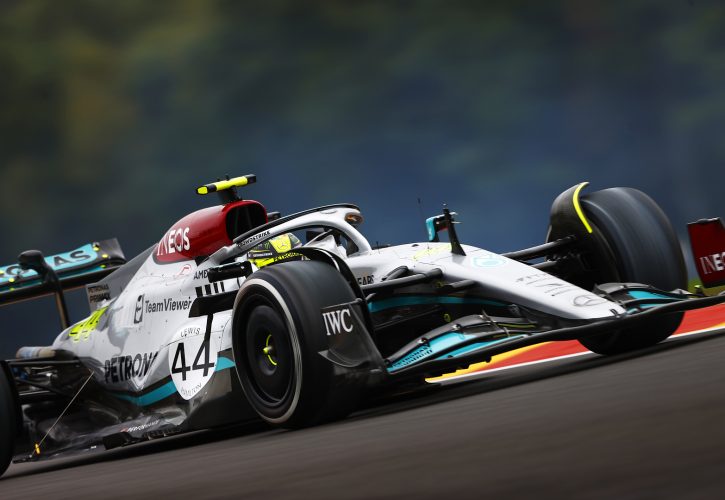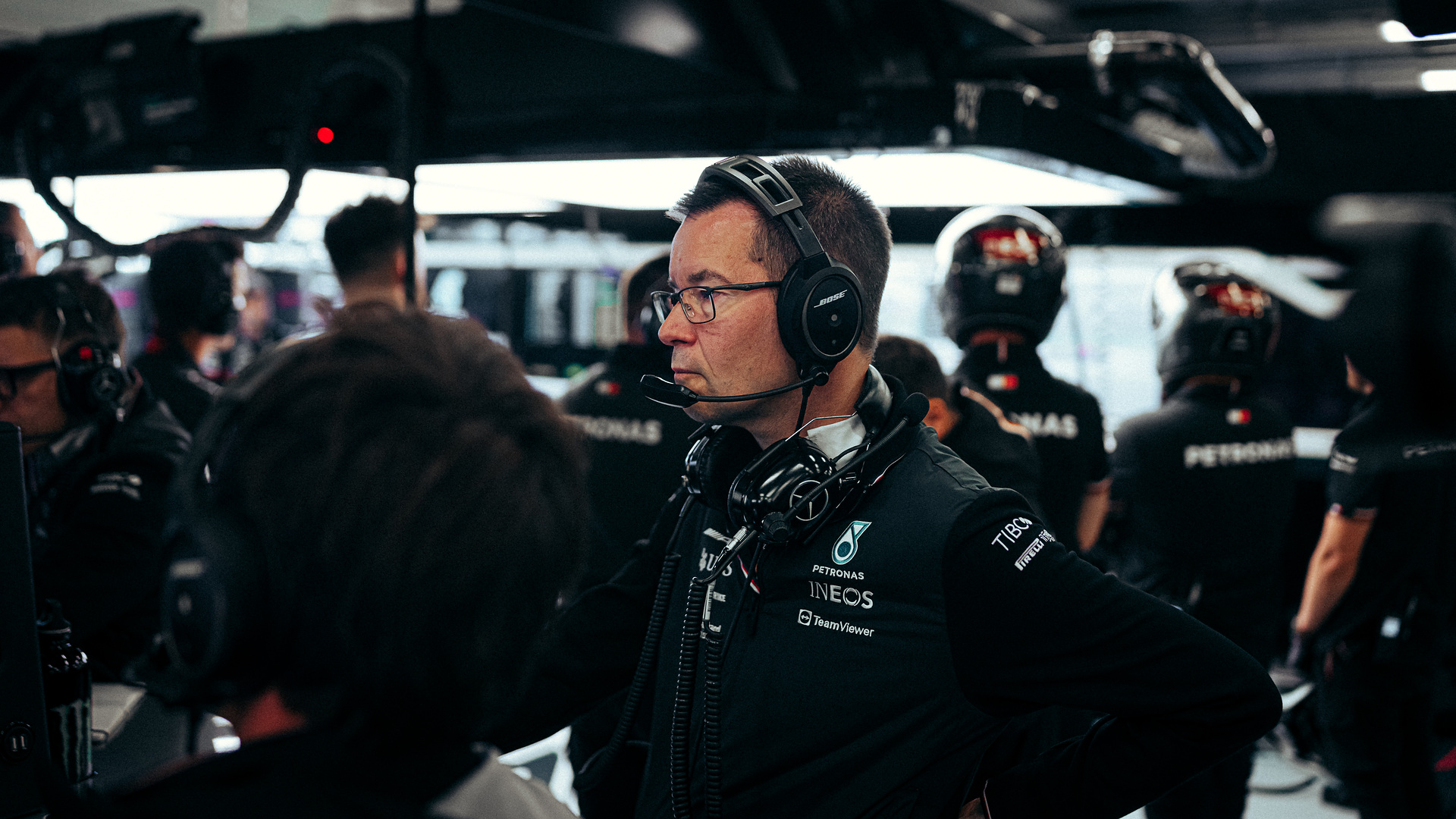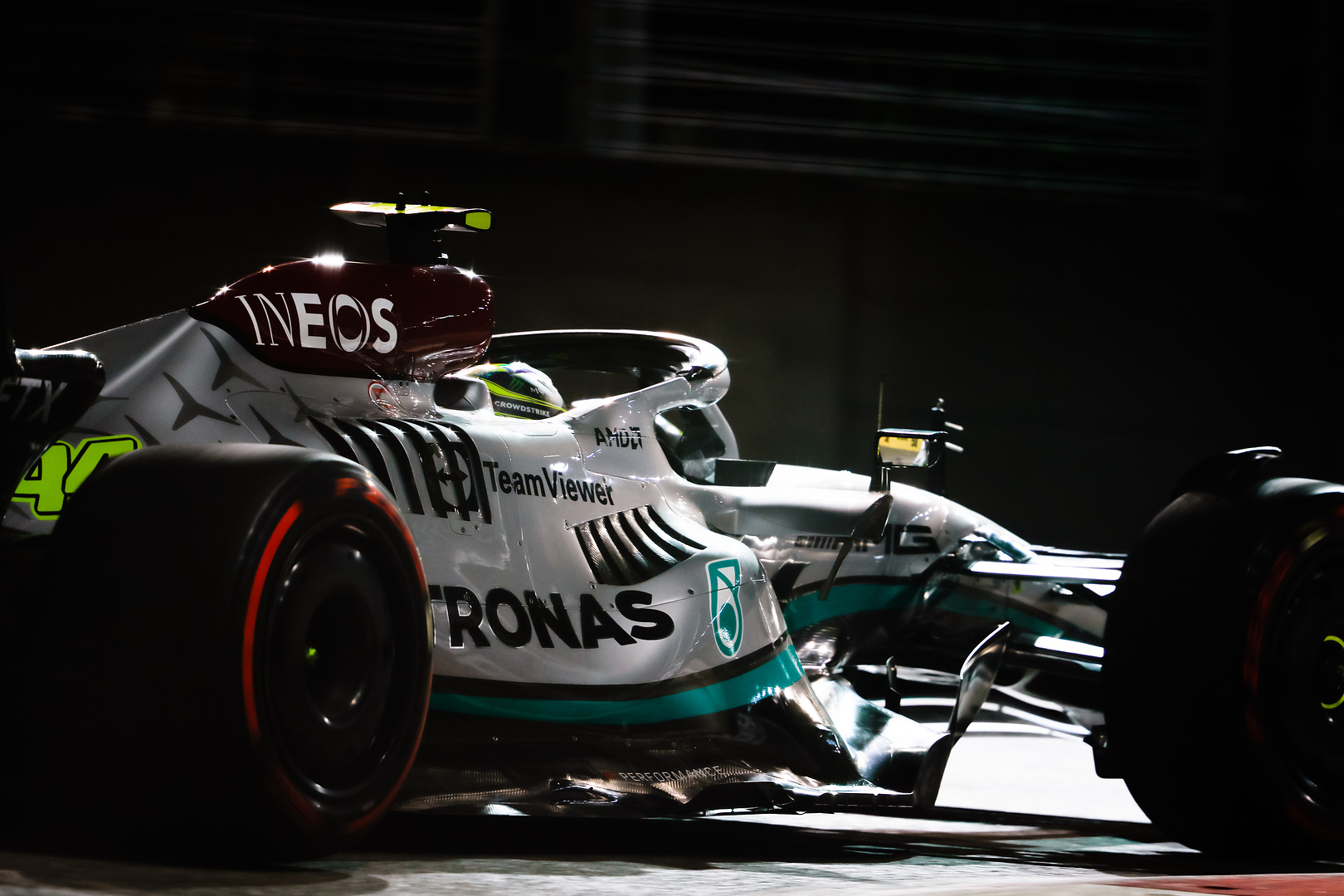
Mercedes technical director Mike Elliott believes that the problems that have impacted its W13 silver arrow this year can be traced back to one fundamental "mistake" made by the team in 2021.
After eight years of utter domination during which it clinched eight consecutive Constructors and seven Driver titles, Mercedes is potentially heading towards a winless campaign, such has been the level of its difficulties this year.
When the Brackley squad rolled out its W13 'zero sidepod' concept in pre-season testing, many believed that Mercedes had once again unleashed its engineering prowess and unveiled a silver arrow with an unfair advantage.
However, the W13's package proved complicated to set up from the outset, with porpoising and bouncing significantly impacting the car's performance.
But gradually, Mercedes' engineers have been able to mitigate the issues and significantly improve their car's erratic behaviour, but snatching that elusive win in the final five races of the year will remain a challenge.

©Mercedes
Speaking to Formula 1's Tom Clarkson on the latter's Beyond the Grid podcast, Elliott revealed that the source of the W13's difficulties were rooted in a specific "moment in time" that took place last year.
"You look at how we developed the car, and I can point to one moment in time last year where we did something where I think we made a mistake," Elliott explained.
"What you’re seeing in terms of performance and the way it swings from race to race as a consequence of that, and that’s a mistake we’ve known about for a while, and something we’ve been correcting and that’s why our performance has gradually got better.
"But it’s not something we can fully correct for a little while yet, and we will do over the winter."
Unfortunately, Elliott stopped short of revealing the exact nature of the "mistake" made by the team last season. But hints point to a specific flaw embedded in the exposed part of the W13's all-important floor.
Elliott did elaborate however on how Mercedes' aerodynamicist exploited a loophole in F1's new technical regulations to whip up their zero-sidepod concept.
"With a loophole, you go through the winter and you look at it and think ‘has anybody else spotted it, is someone else going to turn up with it?’," Elliot said.
"While it looks visually very different, as always with these things, it’s about opening up small aerodynamic advantages.
"Without going and running a development on the concept we’ve got, and running a development on a different concept, it’s hard to know what it will be worth at the end.

©Mercedes

©Mercedes
"But it wasn’t a huge game-changer, in the learning we’ve found this year, it’s less about the shape of the car, it’s more about the way we approach the development of the car, that’s where the difference lies.
"When you look at the sidepod, people say ‘it looks very different, that must work completely different to the rest of the cars’, and it doesn’t, it’s just a slightly different solution.
"Aerodynamically I don’t think it’s a massive departure from the other cars, it’s just something that adds a little bit of performance for us."
Ahead of the start of the season, Mercedes' creative concept was confidently disclosed to the FI to ensure its legality. But Elliott admits the governing body's officials required some convincing.
"The aerodynamicists come up with the idea, we take another group of people, generally run by our chief designer, they will go and look for themselves and see if they can shoot it down," Elliott said, explaining the team's legal process."
Keep up to date with all the F1 news via Facebook and Twitter






